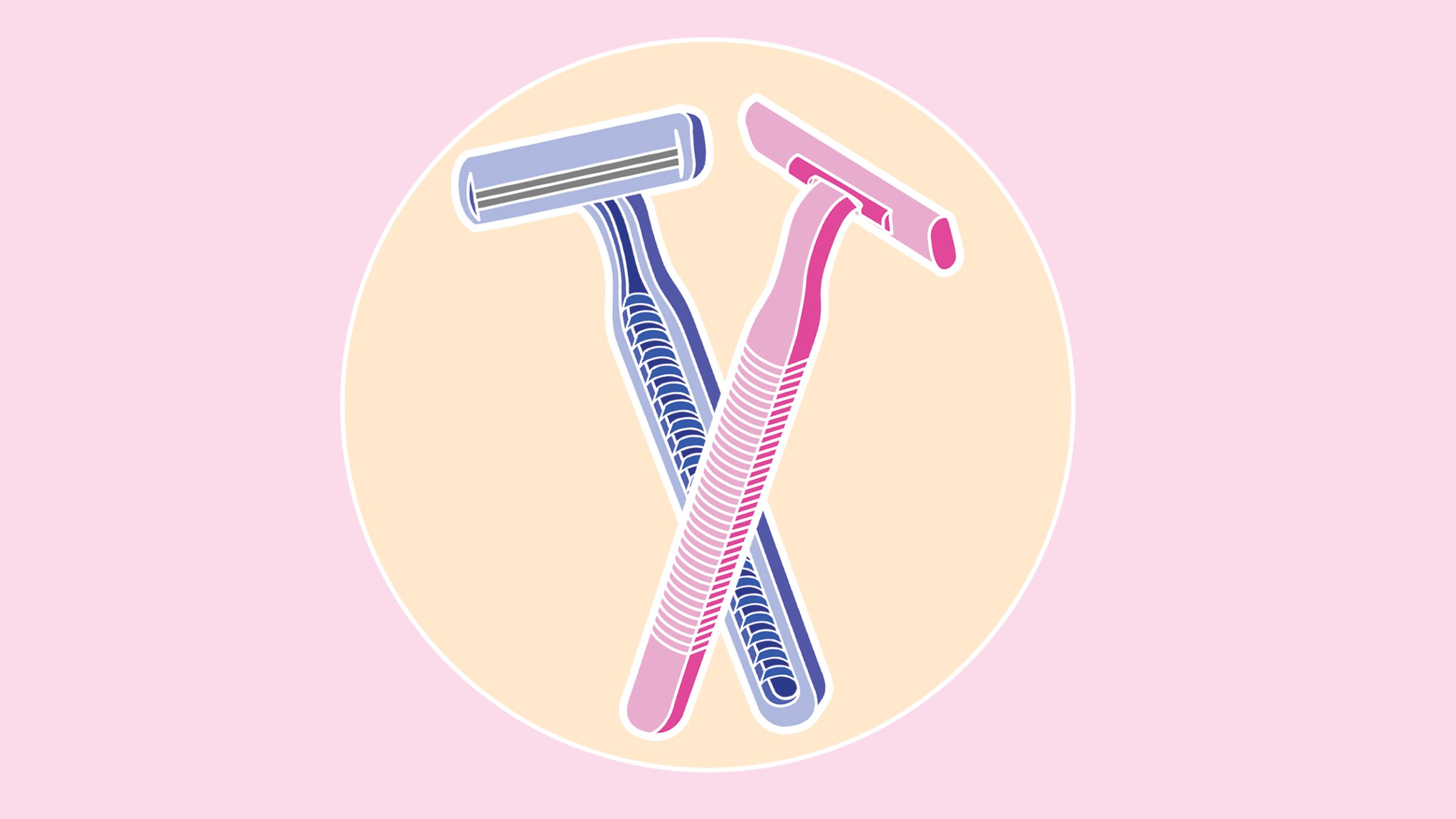
Here’s some infuriating news: When a guy buys a bottle of body wash, a razor or a new pair of jeans, he probably pays significantly less than if you’d gone shopping for the women’s versions of those exact things, made by the same brand, sold at the same store.
A 2015 study conducted by the New York City Department of Consumer Affairs (DCA) looked into how goods are priced and found that, a whopping 42% of the time, women’s items are upcharged by an average of 7%—even if the product is virtually identical to a cheaper item sold in the men’s aisle. Dubbed the “pink tax,” you can chalk it up to yet another way against which women are discriminated.
We talked with Julie Menin, commissioner of the DCA, about the hidden costs associated with being a female consumer and how you can avoid being taken advantage of.
Motto: Why did you want to commission this research?
Menin: I used to work for a personal care products company as an attorney, so I knew from experience that, although there might be two products that were very similar, there was a bent to market them differently. When I became the Commissioner of the DCA, I asked the staff to look into this issue because I had a hunch that it might be a pervasive problem. We wanted to see if, over the course of a woman’s life, gender-based disparities in the pricing of various goods persisted—and if so, how widespread it was.
Motto: What shocked you most about the findings?
Menin: When the researchers came back with the results, I was surprised by how pervasive the practice was. This is not a case of occasional overpricing. 42% of the time, women are charged an average of 7% more than men for what is ostensibly the same product.
And this exists across the board. We wanted to have the broadest possible sample size, so we tested 800 products—high-end, mid-range and low-end—that ran the gamut from children’s toys to kids’ and adult clothing to personal care products to home health care products for seniors. The worst offenders were personal care products, like deodorant and shampoo.
One of the starkest, most egregious examples we saw was a kids’ scooter from Target. The girls’ version is pink and costs $49.99. The boys’ scooter is red and costs $25 less.
Motto: How did you feel about the findings once you quantified the markup for female consumers?
Menin: It is disconcerting and disappointing, particularly considering that women are being paid 70 cents on the dollar. We are making less and being charged more. It is incredibly troubling.
Motto: Does this report relate to women outside of the New York City area?
Menin: Yes, this is a nationwide issue. In fact, we looked largely at national retailers.
Read more: Marine Veteran: Drafting Women is Key to Ending Gender Discrimination
Motto: What is New York City doing in response to your findings?
Menin: We are looking closely at the issue and all legal options that exist. In 1998, the DCA did research on gender-based pricing in the service industry, such as charging men and women differently for haircuts or dry cleaning. As a result, they cast a law regulating this.
Today, if you go into a hair salon in New York City, they can’t have two prices for men and women. The fee must reflect actual variations in labor—so long hair has one price, and short hair has another. At the dry cleaner, shirts with ruffles or pleats might cost more; they can’t charge more across the board for a women’s shirt compared to a men’s shirt. But there is nothing that prohibits a retailer from charging a higher price for women’s shampoo than men’s shampoo, even if the ingredients are largely the same.
But first we are putting pressure on manufacturers and retailers to cease gender price discrimination. We sent out letters, and will be following up very aggressively with phone calls and meetings.
We also hope to raise awareness among shoppers. The advice we give women is to think outside of the aisle. In so many instances, there are equivalent products being sold for significantly less in the boys’ or men’s section. The onus should be on manufacturers to price goods fairly—but we also want to let consumers know that they have a choice: The red scooter is just as good as the pink. And if consumers find a case of gender pricing disparity, we encourage them to start a dialogue with the retailer.
Read more: The Other Pay Gap No One Talks About
Motto: What habits have you personally changed after learning of the results?
Menin: As the mother of three boys, I have always paid very close attention to this issue. For example, if you look at the ingredient list for men’s shampoo versus women’s shampoo, they are largely the same; there is no difference between the two products. So when I buy shampoo for our house, I buy one kind of shampoo, and I buy a gender-neutral shampoo. I will not buy a product that I know has been marked up falsely.
More Must-Reads from TIME
- Why Trump’s Message Worked on Latino Men
- What Trump’s Win Could Mean for Housing
- The 100 Must-Read Books of 2024
- Sleep Doctors Share the 1 Tip That’s Changed Their Lives
- Column: Let’s Bring Back Romance
- What It’s Like to Have Long COVID As a Kid
- FX’s Say Nothing Is the Must-Watch Political Thriller of 2024
- Merle Bombardieri Is Helping People Make the Baby Decision
Contact us at letters@time.com